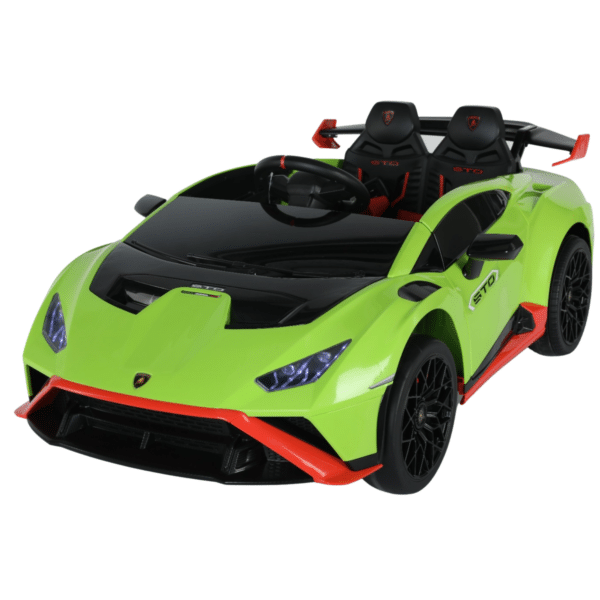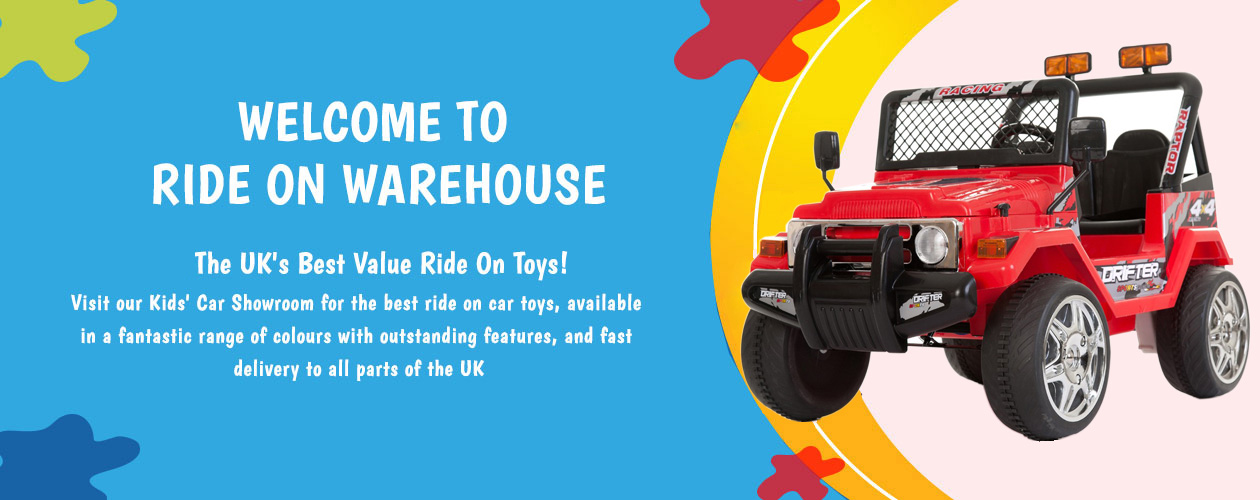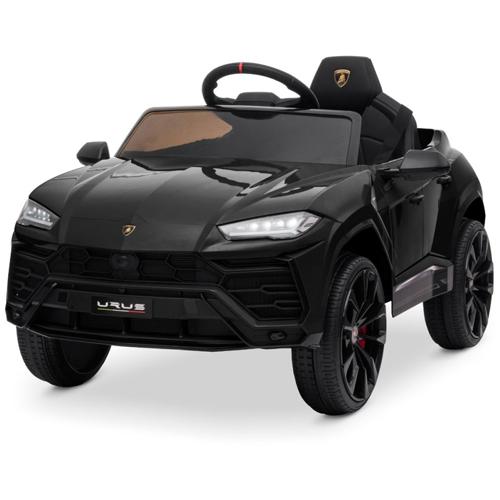Top Advice To Selecting Remote Control Childrens Cars
Top Advice To Selecting Remote Control Childrens Cars
Blog Article
What Are The Things To Look For When Purchasing A Ride-On Car For Toddlers?
It's crucial to think about the age, size and development stage of your child when deciding an appropriate ride-on car. This will ensure they're secure and have fun with the experience. Be aware of these things:
Younger Toddlers (1 to 3 years old) Choose ride-on vehicles specifically designed for this age group. These cars have simple controls, a low-profile design that is stable and has the option of a steering wheel or button. Choose ride on cars with broad bases to ensure stability.
Children who are older (3plus years old) As children get older, they can handle more advanced ride-on cars that have additional features and controls. Look for cars that have adjustable seats, higher weight capacities and interactive features like working lights, music and sounds. To ensure safety, look for vehicles with an the ability to adjust speed or parental controls to allow for different levels of skill.
Size
Height and weight When choosing a car to take your child in, it is important to take into account their size and weight. Choose a vehicle that has the weight and height capacity that is comfortable for your child. Avoid cars that are small or large which are uncomfortable to drive or dangerous.
Comfort and legroom Be sure that the car has ample space and legroom to allow your child to sit comfortably. Examine the dimensions of the car's seating area to ensure it's suitable for your child's height and height.
Developmental Stage
Motor Skills - Take into consideration your child's motor abilities and coordination abilities when choosing a ride-on car. The older children might have the ability to utilize more advanced features and controls while toddlers younger than them may require a simpler control.
Independence and Confidence The ride-on car helps children develop confidence and independence as they learn how to steer and control their car. Pick a car that allows your child to learn to steer, accelerate, and brake on their own. This will build their motor skills and confidence as they progress.
Interest and Engagement - Take into account your child's preferences and interests when choosing the best ride-on car for them. Select a car that has themes and colors or features that will appeal to your child's preferences, regardless of whether it's a vintage vehicle or a sports car a truck, or a themed car with a character.
When you take into account your child's age as much as their size and development stage, you'll be able choose an appropriate, safe ride-on that your child will enjoy and learn from. Take a look at the best remote control childrens cars for blog info including toy the car, car for toy, electric ride along car, two seater childrens electric cars, childs electric ride on car, 2 seater electric cars, kidscars, electric ride on cars, childrens electric ride on, ride on digger and more. . 
How And Why What Is The Reason Electric Ride-On Cars Cater To Different Skill Levels?
Children can enjoy a thrilling and safe ride on electric ride-on vehicles that have various speed and control options. Let's look at what these features are and why they are implemented - Safety -
Different children have different levels of proficiency and confidence in driving in ride-on vehicles. With multiple speed settings available parents can adjust the vehicle's maximum speed in accordance with the child's capabilities and decrease the risk of an accident.
Beginners and younger children prefer the slower speed settings and older children or those who have more experience are able to use the higher speeds.
Gradual Learning Curve -
With various speeds electric ride-on cars offer children a learning curve that allows them to gradually develop their driving abilities. Beginning drivers should begin with slower speeds in order to become comfortable with the controls before moving up to faster speeds.
When a child's driving capabilities improve, parents can increase speed gradually. This provides them with a sense progress and accomplishment.
Parental Control
Certain electric cars have parental controls that allow parents to restrict the speed of their child's vehicle. This feature allows parents to feel safe knowing that they can modify the vehicle's speed, or even intervene when needed in order to ensure that their child is secure.
Parental control options may include remote speed limiters, emergency stop buttons or remote steering capabilities dependent on the type of vehicle.
Adaptability
As children develop, their interests and abilities can change. Electric ride-on vehicles with various speed settings allow flexibility and adaptability to accommodate these changes as they happen.
As a child develops confidence and skill they can progress to higher settings. This results in a more thrilling journey. In the opposite direction parents can decrease the speed for younger children or for their peers.
Customization
Multi-speed settings allow customization of the experience of riding according to personal preferences. Children can select the speed that is appropriate for their comfort and level of excitement.
Certain electric vehicles come with additional features like variable braking sensitivity and acceleration. These features let you fine tune the sensitivity of the driving to suit particular needs.
Electric ride-on vehicles that come with different settings for speed, control options, and other features that allow for a custom, safe riding experience. They're suitable for children with varying skill levels and preferences. These features help build confidence, development of skills, and fun adventures while ensuring parents can supervise and intervene if necessary to ensure the safety of their children. See the top discover more on ride on toys for blog advice including toy ride, ride electric car, childs electric ride on car, car for toy, toy with car, toy car, toy car toy car, ride on toy, kids electric cars, digger ride and more. . 
What Are The Different Types Of Remote Controlled Cars For Children? Pros And Pros And
Remote control vehicles for children Also known as RC or remote-controlled vehicles are available in a variety of sizes, styles and prices. They're made to accommodate different tastes and budgets. This article will provide an overview of types, sizes and prices of children's remote controlled cars and their pros and cons.
Electric RC Cars – Remote-controlled cars powered by batteries that can be used indoors and outdoors. They are available in many types, including buggies, trucks and sports cars.
Nitro RC Cars – Gas powered remote controlled cars that have better performance but require greater maintenance. They are typically bigger and more expensive than electric RC vehicles.
Scale Models - Remotely controlled replicas of real-life vehicles, such as trucks, cars, aircrafts, and boats. Scale model sizes range between 1-10 and 1--24. The larger models provide greater quality and greater real-world realism.
Sizes -
Remotely controlled children's cars are available in a variety of dimensions. These range from small miniature replicas to larger-scale replicas. The size of the vehicle can influence the performance, speed and handling characteristics.
Micro-sized vehicles that are light and small, are ideal for indoor use and also by young children. Cars that are larger in size offer more power and durability and therefore are ideal for off-road and outdoor racing.
Prices are
Prices for remote-controlled kids' cars can vary depending on features, brand and quality.
The micro-sized electric and nitro-powered RRC cars are available in sizes ranging from $20 to $100.
Models and top-of-the-line hobby RC automobiles cost anywhere from a few hundred dollars up to 1000 dollars, depending on the level of detail.
Pros and Pros and
Pros -
Entertainment - Remote controls for children's cars offer endless entertainment and fun for adults and kids alike.
The operation of an R/C vehicle helps children to develop spatial awareness, problem-solving skills and hand-eye coordination.
Social Interaction - RC vehicles are fun to play with families and friends, encouraging the social aspect and cooperation.
Customization - Many RC vehicles can be customized with aftermarket modifications parts and accessories that improve the performance and appearance.
Cons
Cost – High-quality models with advanced features, such as hobby grade cars, can be quite expensive.
Learning Curve - Operating an RC car requires practice and expertise, and smaller children may struggle when it comes to the controls at first.
Maintenance Regular maintenance is essential for RC cars like cleaning, lubrication and repairs.
Safety Risks RC cars can pose safety risks including falls, collisions and electrical dangers if they aren't used under the supervision of an adult and with proper care.
The best remote control children' cars are those that offer an educational and exciting experience to kids of all different ages. When selecting the ideal model for your child it is important to take into consideration a variety of factors, such as size, price features and safety. Hobby-grade RC cars are better for children who are older and more enthusiastic, while simpler cars are better for younger and less experienced children. Read the most popular Lamborghini ride on car kidscars.co.uk tips for more recommendations including electric two seater cars, childrens electric ride on, toy car for car, ride on toy, toy in car, a toy car, ride on toy, ride on toy, car electric ride on, electric ride along car and more. .